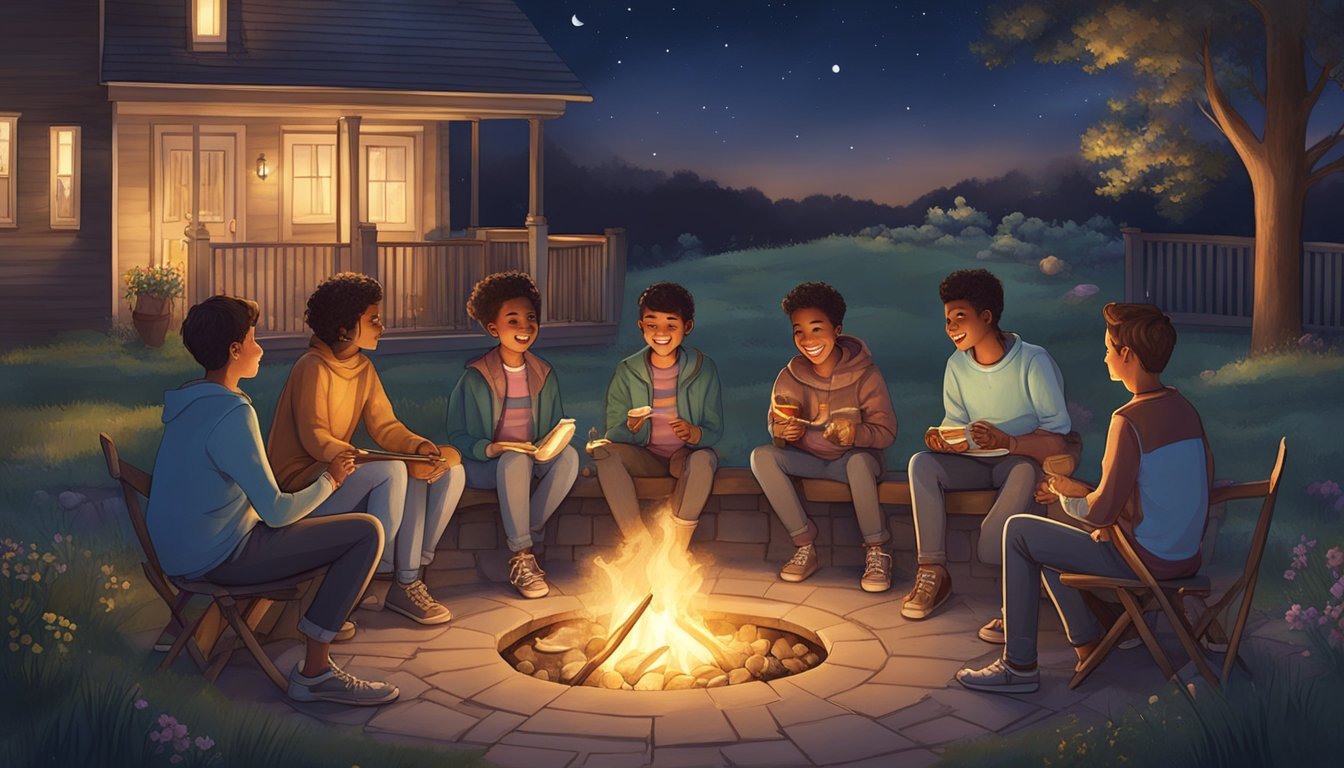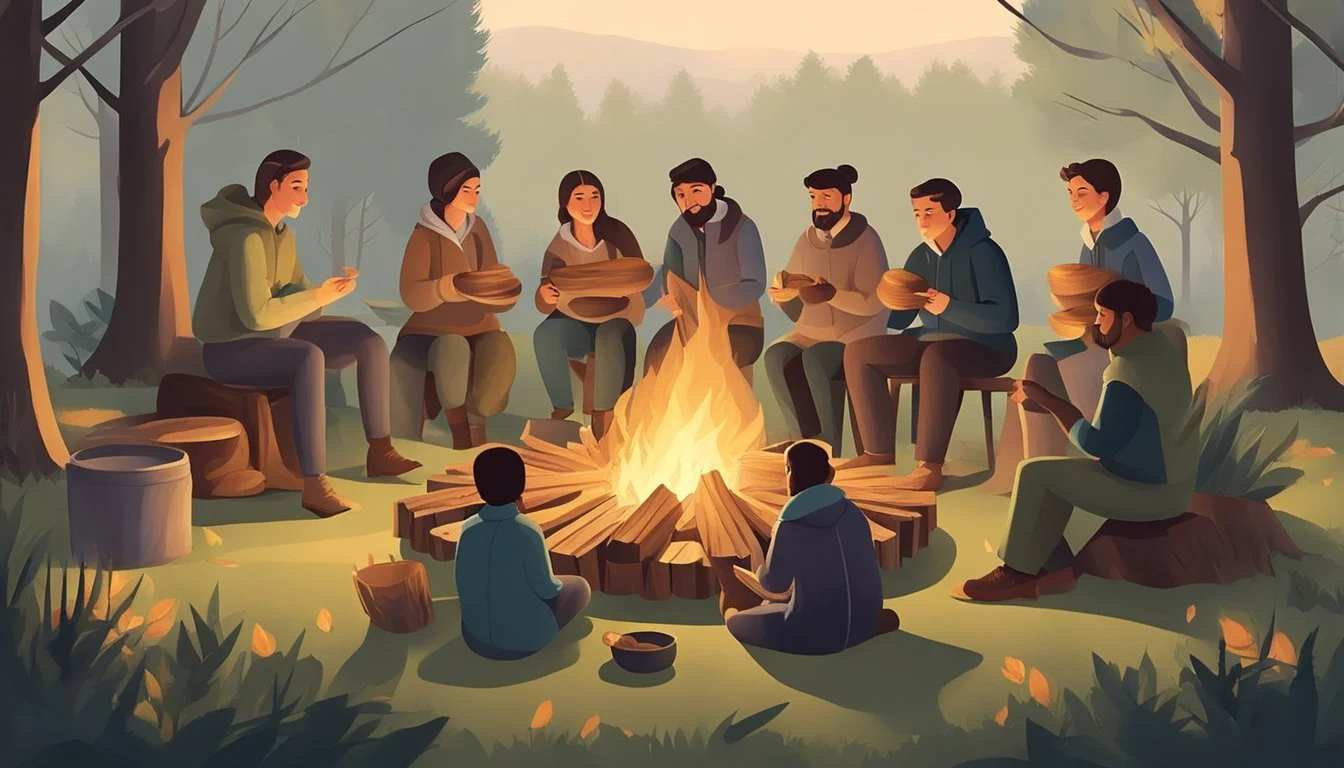Building the Perfect Easter Fire Pit Gathering
Your Guide to an Unforgettable Celebration
Easter marks a time of celebration and gathering, an occasion that pairs perfectly with the inviting warmth of a fire pit. Establishing an outdoor fire pit area for Easter offers guests a cozy spot to congregate, share stories, and enjoy the festive atmosphere. A well-constructed fire pit serves as the centerpiece of these gatherings, bringing together the elements of firelight and outdoor comfort. It is not only a source of warmth but also enhances the ambiance of any Easter celebration, encouraging a sense of community and festivity among guests.
When setting up a fire pit for an Easter gathering, selecting a level spot away from any potential hazards, such as overhanging trees or structures, is essential for safety and comfort. As family and friends come together, having a fire pit that's the right height and size encourages interaction and relaxation. A fire pit height of 12 to 14 inches is often ideal for guests to rest their feet on the edge comfortably while seated around its glow.
To frame the fire pit and elevate the gathering space, one may add aesthetic touches such as wood chips, garden plantings, or even a seating area with pea gravel. These elements create an inviting environment and make the fire pit more of a focal point in the outdoor setting. Easter-themed decorations can be incorporated to further accentuate the celebratory mood, ensuring that the fire pit area is not only functional but also visually appealing for the holiday.
Planning Your Fire Pit
A well-planned fire pit makes for an inviting Easter gathering, necessitating careful consideration of space, regulations, location, and dimensions.
Assessing the Backyard Space
One begins by evaluating their backyard to ensure there's adequate room for a fire pit and guest seating. Space assessment involves checking for a level ground area that can accommodate the pit and a safety radius of at least 10 feet from any structures or combustibles.
Understanding Local Regulations
Before any ground is broken, one must familiarize themselves with local fire codes to ensure compliance. This includes restrictions on the fire pit's placement, permissible size, and whether a permit is required for construction.
Choosing the Right Location
The ideal location for a fire pit is on stable, non-flammable ground, away from overhanging branches, structures, and fences. An open area exposed to minimal wind is preferred to prevent smoke from becoming a nuisance. The pit's proximity to the house should be such that it offers convenience but upholds safety.
Determining the Size and Shape
When deciding on the size of the fire pit, one should consider both the scale of their gatherings and the size of the backyard. Typical fire pits range from 24 to 48 inches in diameter. As for shape, circular fire pits are classic and facilitate social interaction, while square or rectangular shapes can align well with the existing backyard aesthetics and may provide a larger area for bigger gatherings.
Designing Your Fire Pit
Designing an Easter fire pit involves careful selection of materials and a style that ensures safety and functionality for a memorable gathering. This process is key for constructing an inviting outdoor feature.
Selecting Materials
When choosing materials for a fire pit, durability and aesthetic appeal are paramount. Brick and concrete are popular choices due to their resilience to high temperatures and weather conditions. Here’s a consideration list:
Brick: Offers a traditional look and comes in various colors to add a warm, rustic touch.
Concrete: Highly versatile for a modern design, and can be styled into various shapes and sizes.
Opting for a Fire Pit Style
The style of a fire pit can define the ambiance of outdoor gatherings. Choices range from rustic to contemporary:
Rustic: Characterized by natural stones and a campfire-like appearance.
Modern: Sleek lines and minimalist structures, often using concrete as the primary material.
Traditional: Often involves brick constructions that evoke a timeless quality.
Focusing on Safety and Functionality
Safety is the most critical factor in the design. A well-designed fire pit is both safe to use and functional. Here are key safety considerations:
Ensure there is enough clearance from flammable materials.
Install a fire screen to contain sparks.
Ensure stable footing to prevent tipping or shifting.
Functionality includes aspects such as the ease of cleaning the pit and the ability to withstand weather changes, ensuring the fire pit remains a cozy, central point for Easter gatherings and beyond.
Constructing the Fire Pit
To ensure a safe and aesthetically pleasing fire pit for your Easter gathering, careful planning and precise execution are vital. Construction involves gathering tools, preparing the foundation, building the structure, and then adding finishing touches.
Gathering Necessary Tools
Before beginning construction, one must collect the required tools for the project. A shovel is needed for excavation, while a hand tamper or a rubber mallet is essential for packing the base. Concrete blocks or natural stone will form the structure, and to ensure stability, a level is crucial for maintaining even layers.
Preparing the Foundation
Starting with a level area is critical:
Mark the fire pit's perimeter using string or marking paint.
Using the shovel, dig to a depth of about 6-8 inches within the marked area.
Compact the dirt with a hand tamper to create a solid and level gravel base.
Building the Structure
To erect a stable and durable fire pit, follow these steps:
If the structure is on a patio, cement the first layer of blocks to prevent shifting.
Continue stacking the concrete blocks or natural stone, ensuring joints are staggered for strength.
Check that each layer is level and make adjustments as needed with the rubber mallet.
A fire pit ring can be inserted to act as a barrier between the fire and the structure.
Adding Finishing Touches
Once the structure is built, some final enhancements will ensure both functionality and appeal:
A thick layer of gravel inside the pit will aid in drainage and heat distribution.
Creativity can come into play here; using technique, one could add decorative stones or metalwork around the pit to personalize the space.
Following these guidelines, one can construct a resilient and inviting fire pit in anticipation of the perfect Easter gathering.
Creating the Ideal Fire Pit Gathering
Easter gatherings call for a carefully crafted space around the fire pit, where comfortable seating, a pleasant ambiance, and a setup conducive to cooking and entertainment can transform a simple fire pit into the centerpiece of celebration.
Selecting Comfortable Seating
When planning seating around a fire pit, one should ensure that guests have both comfort and utility. Ideally, the fire pit should be about 12 to 14 inches tall, allowing guests to rest their feet on the edge comfortably. Seats should be situated at a safe distance, yet close enough to feel the warmth. Utilizing built-in stone seating can contribute a sleek and creative touch to the landscape. Additionally, chairs should have cushions or be built ergonomically to provide support during extended periods of socializing.
Enhancing the Ambiance
To create an inviting Easter fire pit gathering, the ambiance holds paramount importance. Subtle outdoor lighting can set the mood, while ensuring the firewood and kindling are dry guarantees a lively flame to gather around. Decorative elements, such as string lights or lanterns, can add a touch of whimsy. One should consider the overall aesthetic to ensure it complements the natural surroundings, making the fire pit area a seamless blend of function and style.
Facilitating Cooking and Entertainment
To turn a fire pit into an entertainment hub, one should integrate features to accommodate cooking. Cooking grates can be placed over the fire, perfect for grilling or roasting marshmallows. Having a dedicated area for guests to cook and interact adds an interactive element to the gathering. Organizing a range of activities, from storytelling to acoustic music sessions, ensures that there's never a dull moment. Guests can engage in the festivities, making Easter memories that revolve around the communal warmth of the fire pit.
Safety Considerations
When planning an Easter fire pit gathering, one must prioritize safety to ensure an enjoyable experience for all guests. They must be aware of both the obvious and subtle fire hazards that can threaten the well-being of attendees and property.
Distance and Barrier Precautions
Chairs and Seating: Maintain at least 3 to 4 feet distance from the fire pit to prevent accidental burns or clothing ignition.
Children's Safety: Keep children at least 3 to 10 feet away from the fire, and always under supervision.
Clothing Considerations
Guests should avoid loose or flammable clothing, particularly materials like nylon, which are prone to melt or ignite near intense heat.
Fire Extinguishing Measures
Always have a fire extinguisher on hand, accessible, and in working condition.
Guests should know the location of the extinguisher and basic usage instructions.
Wind and Weather
Before igniting the fire, check the wind direction to avoid smoke discomfort and reduce the spread of embers, which might start unintended fires.
Preparation and Vigilance
Clear the area around the fire pit of any debris or flammable materials to prevent the accidental spread of fire.
One should monitor the fire at all times and have a plan to safely extinguish it at the end of the gathering.
By following these guidelines, hosts can create a safe and pleasant atmosphere for their Easter fire pit gathering, while minimizing risks and ensuring the safety of all attendees.
Maintenance and Care
When hosting an Easter fire pit gathering, maintaining and caring for the fire pit ensures safety and longevity. One should prioritize keeping the fire pit clean; this means regularly removing ash and debris, which benefits both safety and heat retention.
Regular Cleaning
After each use, let the ash cool completely and dispose of it.
Sweep the interior to prevent ash build-up, which can impede airflow.
Surface Care
Wipe the exteriors with a damp cloth to maintain clean lines and a minimalist appearance.
For limestone fire pits, use a non-acidic cleaner to avoid surface etching.
Inspection and Repair
Check for cracks and repair them to maintain structural integrity.
Inspect the fire pit before gatherings to ensure it’s safe for guests.
Heat Retention
For optimal heat retention, one can line the pit with fire bricks.
Clear any obstructions to promote an even distribution of heat.
Table for Periodic Maintenance Tasks:
Task Frequency Maintenance Task After Use Ash and debris removal Weekly Surface cleaning Monthly Structural integrity inspection Seasonal Deep cleaning and necessary repairs
Proper care translates to enjoyable and worry-free gatherings around the fire pit. By adhering to these guidelines, the fire pit will remain a central piece of outdoor celebrations for years to come.








